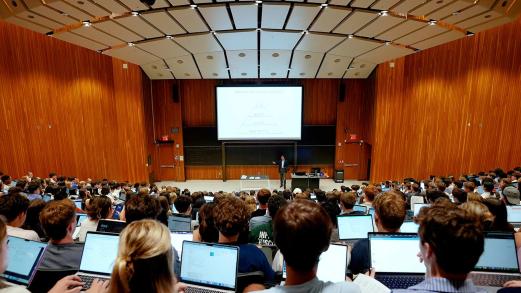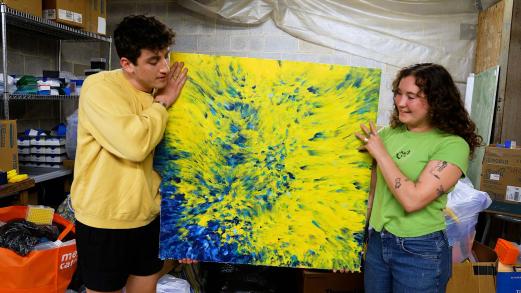What I see in the coaching staff and what I see in the athletes that we have here is something truly very special. If you want to have an image of what it means to be a perfect student-athlete, I invite you to come see the swim team.
A lot of coaches are a little bit overwhelmed with a lot of the data, and so, we don't necessarily use use it, because they don't necessarily know how to use it.
The best thing about Dr. Ono is he translates it for us. Each swimmer is like another math problem. There are so many variables you have to pick and choose which are the ones that are important.
You get to a certain level as an elite athlete where you know there's like only little tiny things that you can do to improve. It was cool to see someone who's not my coach, someone who is looking at it from more of a scientific perspective. A big part of our curriculum is analyzing data and analyzing swimming. It combines physics, fluid dynamics, math to apply that in a way that actually makes a difference for athletes and help them achieve whatever their goals they may have.
The great story is Paige Madden. We were focusing on the 200 freestyle and she wasn't necessarily even going to swim the 400 freestyle. What would be next for her right now if you were still here? Oh good. We'll give you enough times that you can actually execute the 200 at 400 pace. Don't worry about the time.
You're not gonna you're not gonna do the time. Yeah, I don't want you ... I don't even know if i can hit that. Hey, Paige, you'll hit 100 hard, on his call. I think he, along with our coaching staff, have convinced her to swim to 400 free and also convinced her that she actually has a shot. And he predicted her to go 4:03. Her best time was 4:09.
Six seconds is a lot of time. So, I was like, "There's no way that's gonna happen," and I almost scratched the four free, and was like, "I don't know if I'm ready for this." But then decided to do it and he was right. We have the type of student-athletes who will think about it and can apply it and can make those changes and really focus on it.
Because he's showing them, as great as they already are, there's there's room for improvement. They haven't reached their full potential, which they hear from us as a coaching staff, kind of from a little bit of a different angle and then they hear from him you know as more the science, you know, research-driven side of things, and the numbers don't lie.
It gave me a good confidence boost to know that I was worth analyzing and now that I'm working with Ken and Jerry and realize how many hours are actually going into this, that's a really big compliment, because it's a lot of work.
He's played a pretty, you know, pivotal role in just communicating with these athletes and helping them to be confident to see what they can actually do, and what they're capable of.
What I hope our little project indicates is our true belief in the spirit of interdisciplinary work. But what I want people to understand here is that at the University of Virginia, we celebrate even a mathematician collaborating with an Olympic swimming coach and that's what we're about here at UVA.






